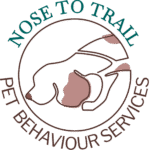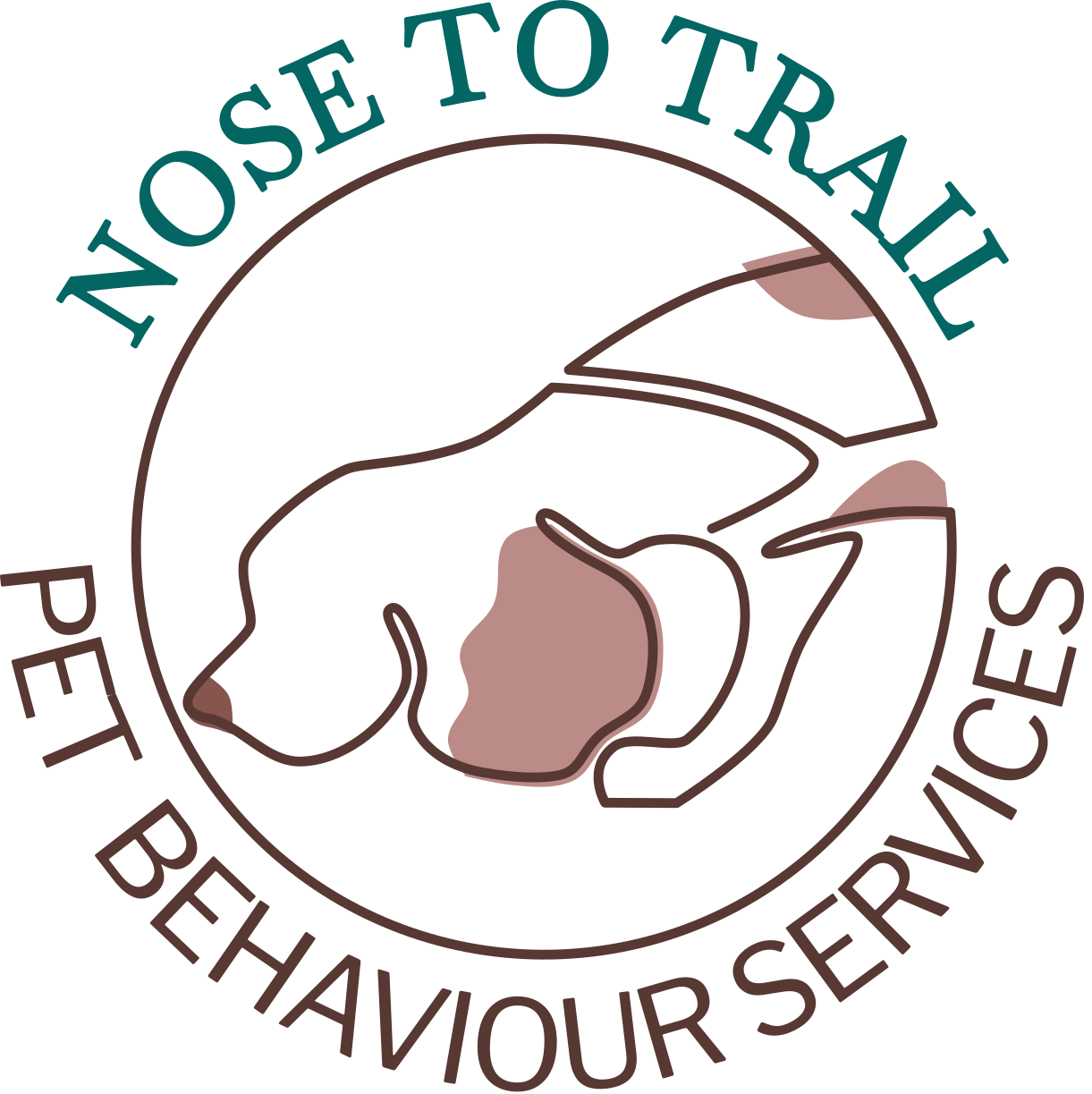The full title of this wonderful yet small book is “Eye of the Trainer, Animal Training Transformation and Trust”.
First published in 2020, this book was a great read for dog trainers and canine professionals during the first COVID-19 lockdown. That isn’t to say it is not a good read now, just I read the book sat in my garden wondering when on earth I would be able to be back face to face training dogs again rather than sat scheduling Zoom calls. It was an ideal screen break for me and many of my colleagues who ended up discussing the book and Ken’s amazing training skills over WhatsApp!
This book is not really aimed at dog owners, it is primarily aimed at animal training professionals. That being said, if you’ve gotten really interested in dog training and behaviour of animals throughout your clinical animal behaviour consults with Nose to Trail, then it is certainly a book that is written in such a way that is accessible for people who don’t necessarily have a degree in animal behaviour or animal science as Ken writes in a really logical and accessible manner for all.
The book is split into really nice chapters going through topics from different types of training, and why training matters, through to the different types of tools and techniques that people might want to use in training, and then some more complex and advanced animal training stuff.
It is the complex training that I find is really interesting, particularly when looking at Ken’s zoo animal training background and the animals that he’s trained outside of the domestic species, but more about that later – that being said his section on scent detection dogs is a must read for those interested in nose work!
Having met Ken at some animal training conferences pre COVID-19, when we could all travel and having the joy of seeing him present his work in person but also chat to him at breakfast, I think I read the book imaging that he is speaking every word to me! If there isn’t an audio version of this book read by Ken himself then there probably should be.
The Butterfly Project that the author goes into detail about on page 123 is an incredible explanation of how training techniques can be used with species that maybe as a pet dog owner, you wouldn’t expect. The fact this happened in London yet so many of us based in the UK didn’t know about it really surprises me but if Ken can do this training in such an incredible manner, with a group of fragile butterflies to such incredible success, then it really does make you realise that with the right training techniques, anything is possible.
If you haven’t seen it then I really recommend you find it. Have a look online for the Butterfly Project by Ken Ramirez it really is incredible. It really does show the power of positive reinforcement training, and how we can use training to problem solve with so many different species. This book in general is a good way to get people thinking how we can work better with animals, as a species, and how as humans we need to work harder to preserve and conserve our species instead of causing problems by just taking over and destroying habitats of animals, and just letting animals be the casualty as we as a species expand so dramatically and change the world to fit our human ideals, and not those of the animals who came along before us!
Ken has a really fascinating background, and he is the type of trainer that every dog trainer like myself aspires to be, his journey into becoming a positive reinforcement trainer is one that many trainers can relate to but for me it is primarily the fact that I started my animal training life as a exotic animal trainer or a zoo animal trainer if you want to call it that, primarily training marine mammals such as; dolphins and sea lions, seals and otters.
That is why, compared to some of your traditional dog trainers in the UK who use maybe have used more punishment based methods, or more of the old school dominance based methods, I have sometimes approached my dog training in ways that are not conventional certainly don’t meet the “Kennel Club style” training that others see as the gold standard of training. Even as simply as when I first took my position in the Canine Behaviour and Training Department at a local college, I was criticised by another staff member because I used a closed fist for a “touch”/ hand target, rather than an open palm, which apparently is the done thing for dog training! I didn’t do that because I had worked with sea lions and I had always used a closed fist, and had a little sprat held within my hand that I would then open the grip of my closed fist and release the fish into the seal or sea lions mouth. I was criticised, “oh you don’t do that with dog training” and, “that’s not how we train dogs”. It’s really nice for me to see how successful a trainer like Ken has gone on to be, and other trainers like Chirag Patel, who have also worked with marine mammals, and then moved into domestic species – I doubt I’ll ever be as well known or write such great books as these two incredible trainers but the point is that the methods we use are the same. Training with kindness gets you everywhere – real trainers don’t train with pain and that is evident in Ken’s book.
Some closing thoughts on this wonderful book before I waffle on about zoo animal training and marine animal training for too long! The book is short, compared to another book by Ken “Animal Training” it is actually tiny! It’s paperback so there really is no excuse to not fit it in your bag and read it on your work breaks. There are a couple of photographs in the book of Ken working with various animals which just capture how happy he is in all of his training. I really think he conveys that passion in the way that he writes too. He has creative solutions to unusual problems that should educate and inspire even those experienced trainers.
It is a really great read. If you’re passionate about animal training, and you want to learn more then it is a great book for those people. Perhaps not a pet owner read unless you really want to geek out on different training techniques, but if you’re interested in finding out how the same techniques that you use with your pet dog could transfer over onto rhinos, elephants, any other kind of animal that we see in the zoos, then it will certainly educate you.
Ken is the Executive Vice President and Chief Training Officer of Karen Pryor Clicker Training. You can find out more about him and his books and all of his fascinating training projects here: Ken Ramirez Training & Consulting – Home

